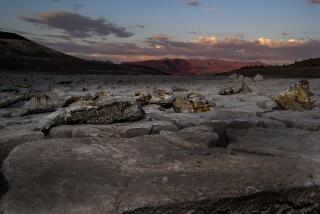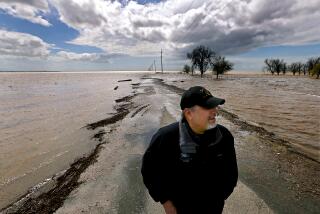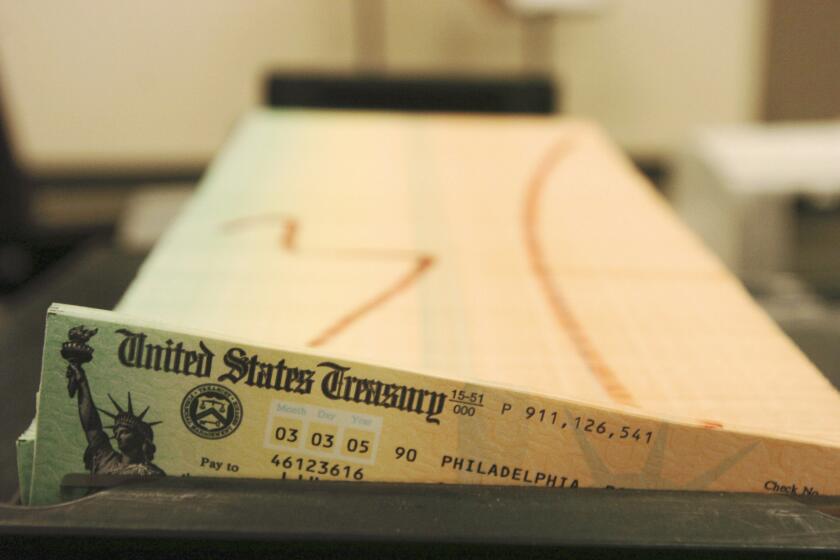California’s severe drought exposes civilization’s thin veneer
- Share via
The severe drought in California and much of the West is a reminder that civilized life is a paper-thin veneer that overlays the deep upheavals of nature. Humans carry on blithely, holding fast to the illusion that the natural world can be tamed and exploited with no unavoidable consequences. Then we get slammed by a hurricane, a flood, a tornado, a wildfire, a drought or a freezing polar vortex that lets us know how wrong we are.
Yet, after each disaster, we forget again -- which is the reason so few of us give any sustained attention to the climate change peril. It is similar to the way we think about death. We know it’s coming, but we would drive ourselves crazy if we thought about it all the time. As a result, we revert to living in the moment or counting on promises of heaven.
With climate change, either we suspect it is too late to do anything about it or we just deny it is real. And even the vast majority of climate scientists who know it is a real phenomenon are quick with the caveat that no single weather event can be attributed to climate change with complete certainty. Nevertheless, now that extreme weather is hammering us with increasingly regularity, it is hard to argue that a profound shift is not underway.
The drought in California’s agricultural lands may simply be part of a natural cycle that has kicked in independently rather than being a result of global warming caused by the sharp increase in atmospheric CO2 levels in the industrial age. Whatever the case may be, experts say it has been 500 years since it has been this dry. The last time it happened, the native cultures in the West were severely disrupted. The question facing us today is how much disruption our more complex society can handle.
In the agricultural regions of California, where half of the nation’s fruits, nuts and vegetables are grown, many farmers are not planting crops this year because there is no water. Cattle and sheep are being sold off by ranchers because there is no grass. More than 25 million people who rely on dwindling local water sources are being told not to expect rescue because state and federal water reserves are quickly running out.
Nevada, New Mexico and other western states face a similar crisis. Unemployment is rising among agricultural workers and American consumers will soon see food prices shoot up as well, as the bounty of the land dries up.
A half millennium ago, the Anasazi people lived in marvelous cliff dwellings scattered throughout the American Southwest. No doubt the Anasazi expected their thriving culture to go on forever. The gods they prayed to lived in the sacred mountains and in the stars of the night sky and, like all humans, they prayed to those gods for bountiful harvests and safety in storms. But all their prayers could not protect them. Something made the ancient ones abandon their settlements – most likely a 300-year drought that began in the 12th century -- and the Anasazi vanished.
As the consequences of climate change become more stark and real, it is a delusion to think we are immune from existential change. Our civilization is more complex and technologically advanced than the Anasazi culture, but that may only make us more vulnerable. Those ancient natives could take their knowledge of simple agriculture and move on to seek more fertile ground and abundant water elsewhere.
When our farmers can no longer feed us, where will we go?
More to Read
A cure for the common opinion
Get thought-provoking perspectives with our weekly newsletter.
You may occasionally receive promotional content from the Los Angeles Times.










